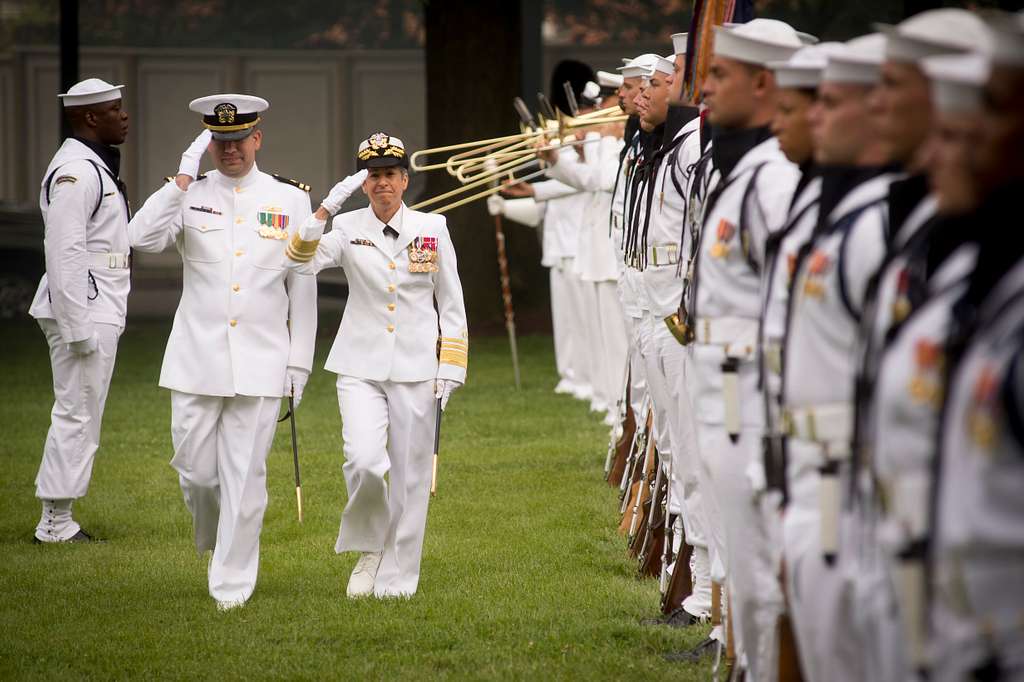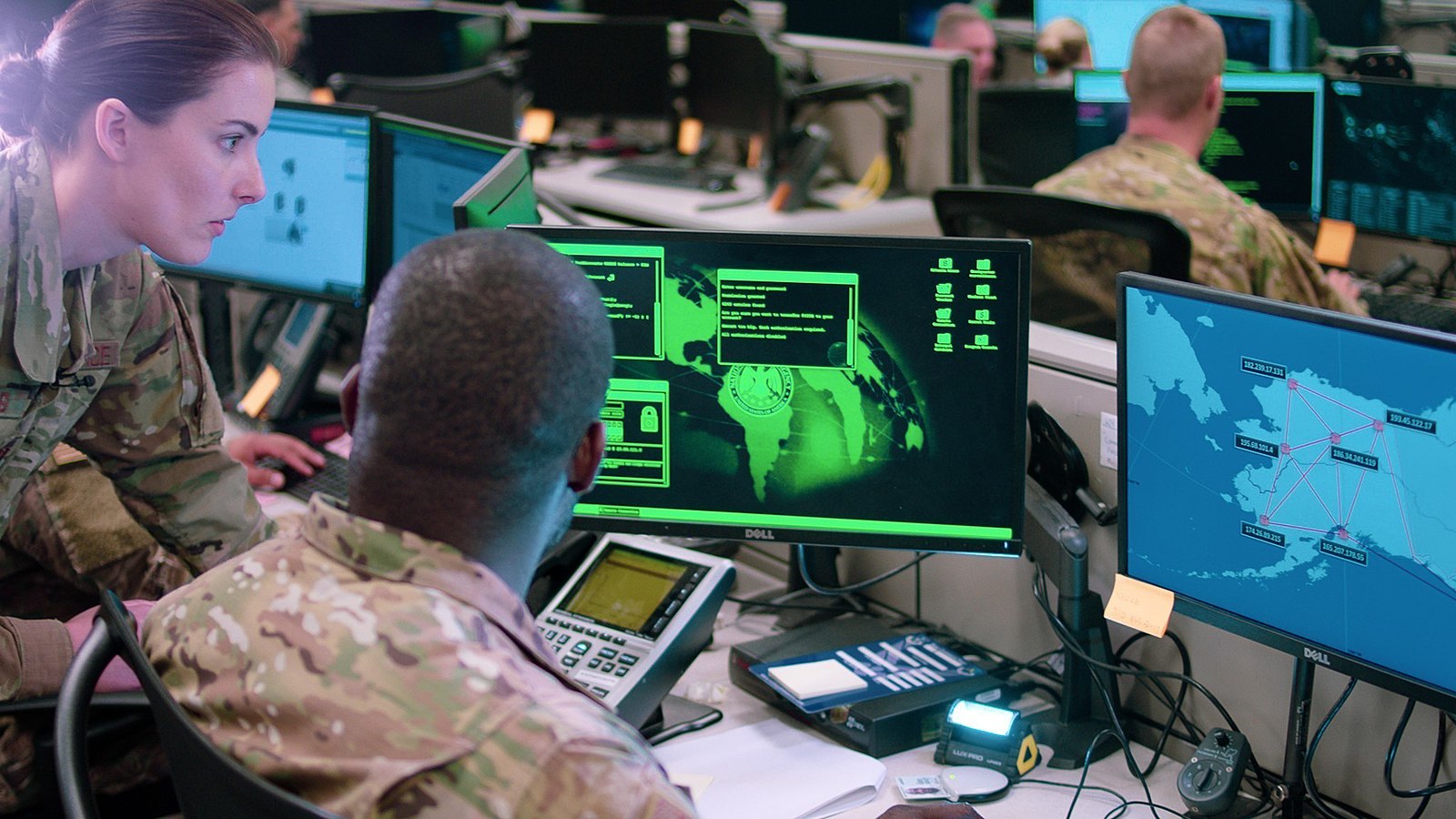Airstrikes, Civilian Casualties, and the Role of JAGs in the Targeting Process
Codifying the protection of civilians as a commander’s explicit objective in all operations is an essential step toward reducing noncombatant casualties.

Published by The Lawfare Institute
in Cooperation With

The commander is pacing the floor of the operations center. Her ops team has been tracking a group of terrorists for several days, but she has just lost the video feed from a small drone inside the building where they were meeting. The last image received was that of two suicide bombers preparing to make their last video. She’s afraid that this will be the last opportunity to carry out a drone strike before the bombers head to their targets. The problem—there’s a young girl just outside of the building who is likely to be killed or injured. The commander calls for her judge advocate general (JAG), who tells her that, based on the likely collateral damage, the strike must be approved by someone higher in the chain of command.
This is a scene from a movie. But the process it depicts, and the issues it raises for the commander, are not so different from those in real life.
I know this because I was once one of the military lawyers who provided advice in similar situations. In my capacity as a Navy JAG, I supported special operations task forces, advising operations center personnel and commanders conducting missions in the Central Command area of operations between 2006 and 2016. This included supporting a “strike” cell and advising a target engagement authority on airstrikes that were predominately dynamic—meaning that the strikes were identified and executed in live-time, sometimes within just minutes or hours. (Deliberate strikes, by contrast, are vetted over the course of several weeks or months.)
Based on these experiences, I will try to shed light on recent reports on civilian casualties caused by U.S. airstrikes—and provide recommendations to reduce such casualties.
The death and injury of civilians in airstrikes carried out by the U.S. military in Afghanistan, Iraq, and Syria has been the subject of critique and investigation by nongovernmental organizations, the media, and even within the U.S. government for years. Independent civil society groups have been tracking allegations of civilian casualties and issuing reports calling out the discrepancies between Department of Defense reporting and what they saw on the ground. The Defense Department has conducted numerous investigations and reviews of civilian casualty allegations. And Congress, too, has focused its attention on the issue: Lawmakers have required that the Pentagon submit an annual report on civilian casualties, designate a senior official for civilian casualty policy, and, under Section 1721 of the National Defense Authorization Act for Fiscal Year 2020, conduct “an independent assessment of U.S. Department of Defense standards, processes, procedures, and policy relating to civilian casualties resulting from U.S. military operations.” (RAND, which conducted the assessment, released its report earlier this year.)
The various reports share some similarities. None of the reports allege that the U.S. military has intentionally targeted civilians. All find fault with the investigation and reporting of civilian casualty claims, as well as with U.S. efforts to respond to these incidents. The reports also conclude that civilian casualties are caused by a lack of information, incorrect information, and unfamiliarity with customs and actions—all of which are then compounded by confirmation bias, as people rely on their own assumptions to fill the knowledge gaps. The military may mistakenly identify civilians who exhibit unfamiliar behavior as hostile, or fail to recognize the presence of civilians in areas of operations. And the military often relies on information from U.S. partner forces without additional vetting.
The reports also note that mistakes leading to civilian deaths are more likely to occur during dynamic and self-defense strikes as opposed to deliberate strikes. This Lawfare post by Ben Waldman and Michel Paradis briefly describes these different types of strikes, discussing in more detail the “gap” in the targeting process when it comes to self-defense strikes. The New York Times, in its Pulitzer Prize-winning series of articles, also highlighted the disparity in civilian deaths resulting from dynamic strikes, describing the U.S. military’s targeting process—and the differences between its types of targeting. The Times authors also made a troubling accusation that U.S. special operations personnel working in strike cells purposely mischaracterized the basis for ordering a strike in order to circumvent the targeting process, given that there are far fewer restrictions on self-defense strikes than offensive ones.
On Jan. 27, Secretary of Defense Lloyd Austin directed the Defense Department to develop a Civilian Harm Mitigation and Response Action Plan (CHMRAP) within 90 days to “outline the steps the Department will take, and the resources that will be required, to implement recommendations from recently-completed studies of civilian harm.” In anticipation of the plan, a group of nongovernmental organizations released a joint paper in July recommending measures that the Pentagon should implement to increase civilian protection, improve investigations, and compensate victims of civilian harm. These recommendations, some of which are echoed in the RAND study and previous Defense Department reviews, include increasing intelligence resources focused on the civilian population, tracking civilian movement across the battlefield, and providing increased guidance and training when working with partner forces. But as discussed in this post, the most meaningful step that the U.S. could take would be to codify the mitigation of civilian harm as an explicit objective for commanders across all operations. A recent statement from Secretary Austin indicates that such change could be on the horizon, though more detail is needed on how this could be accomplished.
When it comes to civilian deaths and injuries, why are there differences among deliberate, dynamic, and self-defense targeting? How might these recommendations be integrated into the targeting process? And how likely are they to reduce civilian casualties? This post seeks to provide context and insight into these questions based on my former experience as a JAG.
The Targeting Process: Deliberate and Dynamic Strikes
The targeting process is based on detailed doctrine developed by the Joint Chiefs of Staff and the individual branches. While the doctrine acknowledges the difference between deliberate and dynamic targeting, the analysis applied is the same. Self-defense is a justification for a strike and not a separate targeting category. Self-defense strikes are a form of dynamic targeting, but they face notably fewer restrictions than offensive strikes.
Deliberate targeting is the process used in planning strikes against targets that are known and anticipated during planning for future operations. This planning may take place before the start of hostilities or as future operations are planned during a conflict. It can take place months, weeks, and days before the strikes are conducted. The process is usually conducted at a combatant command or an air operations center by a joint targeting board comprising operations personnel, targeting specialists, planners, logisticians, intelligence analysts, weather—and JAGs. This is the most detailed process and results in the commander approving a joint integrated priority target list, a restricted targeting list, and a no strike list, from which strikes are then planned in detail and executed.
Dynamic targeting is the process used in planning and carrying out strikes against unplanned or unanticipated targets during ongoing operations. They are identified by criteria based on the desired end state and the commander’s objectives as identified during the targeting process. The process can occur over several hours or in some cases just several minutes. The process will usually take place in the joint operations center or strike cell that is staffed 24/7. (Strike cells include most of the same type of experts that are found in a joint targeting board, including a JAG.) As noted in the media and across civil society reports, the vast majority of targeting during the past 20 years was dynamic.
The initial—and most important—step in the targeting cycle is identifying the end state of the campaign and the commander’s objectives in accomplishing the mission. Whether the process is deliberate or dynamic, this will determine potential targets and desired effects. Only persons, objects, and effects that contribute to the end state—for example, accomplishment of the mission—and are valid military objectives are to be considered and selected for targeting. The other primary activities that run throughout the targeting process is weaponeering and collateral damage estimation (CDE). Weaponeering involves determining the type of weapon, amount of ordnance, and strike location that would be most effective. CDE involves analyzing the weaponeering recommendation to determine whether such use will create collateral damage and predicting the effects of the weapon on the target and surrounding structures, as well as the presence and number of civilians in the target area. CDE uses historical information, intelligence, computer modeling, and other information to help a commander understand the risk that a particular strike will harm civilians or civilian objects. CDE has limitations, among the most salient that it is not designed to account for unexpected transient civilians or secondary explosions.
While the principles of targeting are the same in deliberate and dynamic targeting, the time-sensitive nature of dynamic targets often means that the analysis will be done in a much shorter time—and with fewer resources—than in deliberate targeting.
Deliberate targets are often clear military objects: a military base, a military aircraft, a tank. In cases where the identity of the person or object is unclear, the staff has time to observe the target and request additional intelligence. Commanders will also usually have a wider array of available weapon systems that they can assign to a strike, possibly allowing them to choose a weapon that will be more precise. In dynamic targeting, the nature of the potential target is often not immediately clear. This is particularly the case when operations take place in urban areas and when the adversary uses otherwise civilian objects for military purposes. Additionally, the time for analysis is compressed and limited to those resources, both intelligence and weapons, that are immediately available to the commander.
In short, the targeting process is designed to help ensure that strikes are necessary to achieve the mission and meet the commander’s objectives by developing targets that are militarily necessary, positively identifying them as lawful military objectives, and striking them with tools and in a manner that is proportionate. As explained by Azmat Khan, who won a Pulitzer for her work on the civilian toll of U.S.-led airstrikes in Iraq, Syria, and Afghanistan, “[T]he targeting process essentially boiled down to two questions: Could the presumed enemy target be positively identified? And would any harm to civilians be proportional, in line with the law of armed conflict —or would it exceed the ‘expected military advantage gained’?”
Self-Defense Targeting
A self-defense strike is a strike conducted against a target that is engaged in a hostile act directed at, or that has demonstrated hostile intent toward, U.S. forces. The easy example is a strike against enemy forces that are firing on U.S. personnel. A more difficult case—and one that might lead to a claim of civilian casualties—is a strike on a vehicle that is heading toward a U.S. position where U.S. forces have intelligence indicating that personnel in the vehicle are preparing to attack. As noted above, this justification for a strike offers the military some leeway that is not available for the majority of deliberate and dynamic strikes, as certain restrictions do not apply under this form of targeting.
For example, a formal collateral damage estimate often isn’t required when calling in a self-defense strike, but the law of armed conflict requirement for proportionality remains. An abbreviated “field” form of collateral damage estimation may be conducted by personnel on the ground who have received special training, such as a joint terminal attack controller, but that process lacks the technical rigor of formal CDE. Of course, self-defense strikes must still comply with the law of armed conflict and U.S. rules of engagement. Even when using force in self-defense, the ground force commander has an obligation to take feasible precautions to minimize civilian harm.
Self-defense strikes carry a greater risk of causing civilian casualties. This is because the threat posed to U.S. forces necessitates a quick response without time to gather additional intelligence and conduct a detailed CDE. These strikes are also conducted in extreme situations where delay may result in the deaths of U.S. personnel and where, sometimes, the strikes are so close to U.S. forces that any mistake may kill or injure U.S. personnel. In self-defense situations, the highest ranking person on the ground may be given the authority to call in a strike that would otherwise require a general officer as the target engagement authority. Although a JAG is not “on the ground” in these situations, there will be a JAG located with the operations center that coordinates the strike.
A related type of strike is a collective self-defense strike. This is a strike conducted in defense not of U.S. forces, but of partner forces. Several of the reports on civilian casualties have found that collective self-defense strikes, particularly in Syria, pose an especially high risk to civilians. Many of these strikes were conducted in defense of unaccompanied partner forces where U.S. forces were not present to vet the information being provided. But notably, collective self-defense strikes have specific limitations not applicable to strikes in defense of U.S. forces: The authority to use force in collective self-defense of a partner force must first be given by the secretary of defense or by the president. This authority is then delegated to the combatant commander via the rules of engagement. The combatant commander may, if authorized, delegate that authority to a subordinate joint force commander or other target engagement authority.
The large number of dynamic and self-defense strikes in the air campaign against the Islamic State should not be viewed with automatic suspicion. In a conflict where the enemy (a) does not have established military installations, (b) lacks clearly marked personnel and equipment, and (c) carries out attacks from civilian locations, it is difficult to identify targets in time to plan a deliberate strike. Embedding special operations forces with a partner force that will be conducting operations will also inevitably put more U.S. forces in harm’s way—which will necessarily lead to more self-defense and collective self-defense strikes. Even so, more could be done during these strikes to reduce harm to civilians.
The Role of the JAG
A strike cell JAG is responsible for advising the operations staff and commander as they answer these targeting questions. JAGs do not approve targets or make targeting decisions. The JAG does not have a veto over a commander’s targeting decision. The final decision is the commander’s alone, and the presence of a JAG will not ensure law of armed conflict compliance. Instead, upholding the law—and emphasizing the importance of adhering to the law—is ultimately the commander’s responsibility.
Of course, the JAG does fill an important role in compliance with the law of armed conflict and the rules of engagement during targeting. In establishing positive identification of a target as a lawful military objective, the JAG works with intelligence analysts to ensure that the intelligence establishes to a reasonable certainty that objects are being used for a military purpose or that an individual is a member of the enemy force. This might entail assessing the reliability of the source, the currency of the information, and the basis for the analyst’s conclusion. In my experience, this often involved nothing more than asking questions—for example, probing how recently the material was collected and understanding the connection between the targeted individual or object and the adversary.
I found that having the intelligence analyst or operations specialist explain why they thought the individual or object was a lawful target, or why they thought that some activity was a demonstrated hostile intent, helped to confirm the solidity of the intelligence. Asking the staff for “specific and articulable facts” that indicate an object has a military purpose, or that an individual is engaged in hostile intent and/or is a member of an enemy organization, helped to identify gaps in intelligence or to confirm the analysis.
Intelligence is necessary not only to positively identify a target but also in the CDE process. As mentioned previously, intelligence in a dynamic targeting situation may be limited to that which is immediately available to the commander. If information on civilians in the area of operations is not already collected so that it may be considered in the CDE analysis, there will be a greater likelihood of civilian casualties. This includes information on the pattern of life and movements of civilians. Almost all of the civilian harm reports recommended improving intelligence and understanding of these dynamics.
During the weaponeering and CDE analysis, the JAG will work with the targeteers to understand why a particular weapon and means of employment is selected. Advising on whether a strike is proportionate requires an understanding of the anticipated military advantage to be gained, as framed by the desired end state and the commander’s objectives, as well as the expected level of civilian casualties. Is there some weaponeering solution that could still meet the commander’s objectives but cause less civilian harm? Is there some feasible precaution the commander could implement that would reduce civilian harm? Without an understanding of the process and its inputs, any such advice would be merely a guess.
The JAG is not the expert in any of these areas and shouldn’t substitute the subject matter expert’s opinions with their own. Instead, the JAG adds value when they understand the mission, the operational situation, the weaponeering and CDE process, and the relevant intelligence so that, when they advise the commander on the law, that advice is fully informed. This level of understanding cannot be obtained if the JAG enters the process moments before a strike—as is the case in the example from “Eye in the Sky,” the movie referenced at the beginning of this post. The JAG must attend the planning meetings and sit on the operations center floor. If a JAG is sitting in their office waiting for the questions to come in, that JAG has failed.
What about self-defense strikes? While a JAG is not on the ground with the commander ordering the strike, there is usually one in the operations center coordinating the air support. In one of the Times articles, the authors note that self-defense could be invoked in cases where U.S. forces were being attacked as well as when U.S. forces detected a display of “hostile intent.” The article—which pulls on information from a former officer who had deployed with a classified American special operations unit—explains that “[u]nder that definition, something as mundane as a car driving miles from friendly forces could in some cases be targeted.” According to this former officer, “the task force interpreted the rules broadly.”
Based on my own experience, the example of the car would require additional intelligence before being targeted. A series of questions would be necessary: Has signals intelligence intercepted a conversation indicating that the occupants of the car are Islamic State fighters and are en route to an attack? Is the vehicle leaving a known improvised explosive device factory? Has the vehicle been tracked as ferrying Islamic State fighters or supplies to and from the front line? In determining whether there is hostile intent, past experience also matters. Is the vehicle or its occupants engaged in some activity that has, in the past, been associated with an imminent attack?
Hostile intent must be demonstrated by some action that indicates an imminent attack. According to the Sanremo Handbook on Rules of Engagement, “[d]emonstrated hostile intent exists when there is a reasonable belief that an attack ... is imminent, based on an assessment of all the facts and circumstances known at the time.” This would include intelligence associating an activity with an imminent attack or on activities that have been observed in past attacks. The manual again states that “[i]n determining whether an entity is demonstrating hostile intent, forces will use their best judgment and consider available intelligence, political and military factors, indications and warnings, and all other relevant information concerning the capabilities of possible threats in the area of operations.” A JAG involved in such a situation might ask whether further intelligence is available or what actions the commander or operator is basing their decision on.
What Can Be Done?
As reporting has shed light on civilian harm resulting from American airstrikes in recent years, it has become clear that the U.S. needs to do more to protect noncombatants in conflict. For one thing, civil society groups have urged the U.S. to increase intelligence resources focused on the civilian population in order to inform commanders on the presence and movement of civilians in areas of operations. This echoes a recommendation from the 2018 Joint Chiefs of Staff civilian casualty review, which stated that the Defense Department should “invest in tools to assist Ground Force Commanders (GFC) with situational awareness.” Increasing available intelligence and awareness of civilians in target areas is essential in all targeting situations.
But beyond this, it is of critical importance that the U.S. “emphasize the importance of mitigating and responding to civilian harm ... as an explicit objective in all operations and across all relevant guidance and training.” This, arguably, would be the most effective step toward reducing civilian casualties. Secretary Austin’s direction to “[i]ncorporate guidance for addressing civilian harm ... into doctrine and operational plans,” if implemented, will begin this change. The CHMRAP, as well as the planned Defense Department instruction on civilian harm will likely provide greater detail on how this is to be accomplished.
As discussed earlier, identifying the end state and the commander’s objectives is the first step in the targeting process. Explicitly designating reduction of civilian harm as a commander’s objective will influence the rest of the targeting cycle. If it’s important to the commander, it will be important to the staff, including those in the targeting process. Increasing the number of JAGs—and the law of armed conflict training they received—was certainly helpful in increasing the military’s adherence to the law of armed conflict. But the real progress was made in the Pentagon’s work to integrate adherence to the law of armed conflict into regulation and military doctrine, thus making it the responsibility of commanders. Making the protection of civilians a commander’s priority will do the same.





